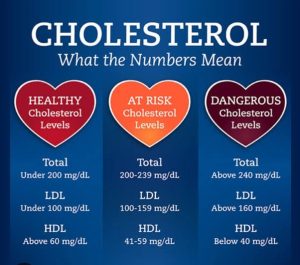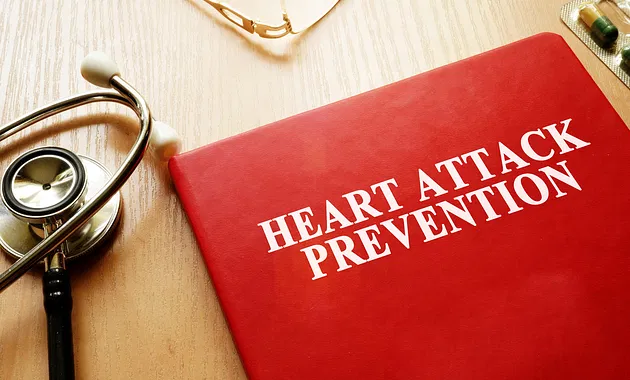Uncharted Territory: Navigating the Risk Landscape
Surviving a first heart attack is a triumph, but the aftermath carries the looming specter of a potential second one. This sobering reality propels individuals towards an active role in safeguarding their cardiovascular health. A plethora of factors, identified by experts, significantly escalate the risk of a recurrent cardiac event:
1. Inactive Lifestyle
- Sedentary Perils: A lifestyle devoid of physical activity emerges as a significant precursor to heart-related complications.
2. Weight Management
- The Burden of Excess Weight: The correlation between being overweight or obese and an elevated risk for a second heart attack is unmistakable.
3. Cholesterol Levels
- Cholesterol Chronicles: Elevated levels, especially LDL (“bad”) cholesterol, stand out as primary instigators of heart attacks.

4. Diabetes
- Sweet Risk: High blood sugar, particularly prevalent in those with diabetes, casts a formidable shadow over cardiovascular well-being.
5. Blood Pressure
- Pressure Points: Uncontrolled high blood pressure emerges as a major player, heightening the susceptibility to subsequent heart attacks.
-
Image by: https://lifemd.com/learn/does-high-blood-pressure-cause-fatigue
6. Smoking
- Tobacco’s Toll: Smoking, the most preventable risk factor, significantly contributes to the prevalence of heart disease.
7. Stress
- Stress as a Catalyst: Excessive stress levels act as a trigger, amplifying the vulnerability to heart-related complications.
8. Substance Use
- Substances and Strain: Heavy alcohol consumption or engagement in illegal drug use poses an additional layer of threat to the heart’s well-being.

The Antidote: Proactive Measures to Thwart a Second Heart Attack
Taking charge of one’s health becomes imperative in diminishing the risk of a recurrent heart attack. Here’s an intricate breakdown of actionable steps individuals can undertake:
1. Quit Smoking: A Transformative Decision
- Risk Halved: The decision to quit smoking boasts a remarkable feat, slashing the risk of another heart attack by half.
- Guided Transition: Seek guidance from healthcare providers for personalized smoking cessation programs, nicotine replacement, or relevant medications.

2. Heart-Healthy Diet: A Culinary Crusade
- Cholesterol Chronicles Continue: By curtailing saturated and trans fats, individuals can actively manage LDL cholesterol and triglyceride levels.
- Trans Fat Vigilance: Discerning food choices, both at home and when dining out, plays a pivotal role in sidestepping partially hydrogenated oils.
3. Control Cholesterol: A Holistic Approach
- DASHing Towards Health: Embrace heart-healthy diets, such as the Dietary Approaches to Stop Hypertension (DASH) diet.
- Medication Vigilance: Adherence to prescribed cholesterol-lowering medications, including statins, forms a critical aspect of preventative measures.
4. Regular Exercise: Strengthening the Cardiac Fortress
- Heart’s Workout: Regular exercise not only fortifies the heart but also aids in weight management, cholesterol regulation, and blood pressure control.
- Prescriptive Exercise: Secure medical approval before embarking on an exercise program, especially for those with a history of heart attacks.

5. Maintain Healthy Weight: Battling the Obesity Epidemic
- Weight Watchers’ Mission: Combatting obesity becomes pivotal in averting a second heart attack.
- BMI Benchmark: Aspire for a body mass index (BMI) within the range of 18.5 to 24.9 for optimal cardiovascular health.
6. Control High Blood Pressure: A Synchronized Symphony
- Harmonizing with Recommendations: Adherence to healthcare provider’s counsel on blood pressure management is instrumental.
7. Mental Health Assessment: Embracing Emotional Well-being
- Beyond the Physical: Emotional factors, including depression, stress, anxiety, or anger, demand scrutiny for their potential impact on heart health.
- Therapeutic Interventions: Seeking the assistance of therapists proves beneficial in addressing emotional well-being.
8. Medication Adherence: Pillars of Heart Health
- The Pill Regimen: Consistent adherence to prescribed heart, cholesterol, and blood pressure medications stands as a pillar of heart health.
- Open Dialogue: Clear communication with healthcare providers or pharmacists addresses any concerns regarding medication.

9. Blood Sugar Control: Taming the Diabetic Dragon
- Diabetes Management Synergy: Control of blood sugar levels plays a pivotal role in reducing inflammation and arterial damage.
- Preventive Measures: Lowering blood sugars emerges as a preventive measure against scarring or narrowing of coronary arteries.
10. Limit Alcohol and Illegal Drugs: Navigating the Hazards
- Blood Pressure Balancing Act: Restricting alcohol intake and abstaining from illegal drugs serve as essential strategies to mitigate their adverse effects on heart health.
- Professional Guidance: Seek professional assistance from healthcare providers for moderation of alcohol consumption or cessation of drug use.

The Denouement: Charting a Course for Cardiovascular Wellness
Embracing a comprehensive strategy is not merely a choice but a necessity in the pursuit of heart health. Individuals are encouraged to forge collaborative partnerships with healthcare professionals, crafting bespoke strategies for enduring cardiovascular well-being. The journey towards preventing a second heart attack is nuanced, multifaceted, and deeply rooted in proactive and personalized healthcare.
Conclusion
In the intricate tapestry of cardiovascular health, the specter of a second heart attack looms large for those who have survived the initial ordeal. However, armed with knowledge and a proactive mindset, individuals can navigate these uncharted waters and significantly reduce the risk of a recurrent cardiac event.
The multifaceted landscape of risk factors, from lifestyle choices to underlying health conditions, underscores the importance of a holistic approach. This journey towards preventing a second heart attack is not a mere checklist; it is a profound commitment to one’s well-being, a nuanced dance between lifestyle modifications, medication adherence, and emotional well-being.
From the profound impact of smoking cessation to the culinary crusade of adopting a heart-healthy diet, each step is a stride towards cardiovascular resilience. Regular exercise becomes the heartbeat of this preventive strategy, fortifying the cardiac fortress and harmonizing various elements such as weight management, cholesterol control, and blood pressure regulation.
The significance of maintaining a healthy weight, controlling high blood pressure, and assessing mental health cannot be overstated. These pillars form the bedrock of a resilient heart, complemented by the vigilant adherence to prescribed medications, particularly those targeting cholesterol and blood pressure.
As we navigate the delicate intricacies of emotional well-being, seeking professional assistance when needed becomes a vital aspect of the journey. Beyond the physical, addressing depression, stress, anxiety, or anger is integral to the overall health of the heart.
In the realm of diabetes management, the control of blood sugar levels emerges as a powerful tool against inflammation and arterial damage, offering preventive measures against the scarring or narrowing of coronary arteries.





